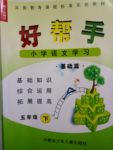题目内容
阅读理解。
Eddie McKay, a once-forgotten pilot, is a subject of great interest to a group of history students in
Canada.
It all started when Graham Broad, a professor at the University of Western Ontario, found McKay's
name in a footnote in a book about university history. McKay was included in a list of university alumni
(校友) who had served during the First World War, but his name was unfamiliar to Broad, a specialist
in military history. Out of curiosity, Broad spent hours at the local archives (档案馆) in a fruitless search
for information on McKay. Tired and discouraged, he finally gave up. On his way out, Broad's glance
happened to fall on an exhibiting case showing some old newspapers. His eye was drawn to an old picture
of a young man in a rugby uniform. As he read the words beside the picture, he experienced a thrilling
realization. "After looking for him all day, there he was, staring up at me out of the exhibiting case," said
Broad. Excited by the find, Broad asked his students to continue his search. They combed old newspapers
and other materials for clues. Gradually, a picture came into view.
Captain Alfred Edwin McKay joined the British Royal Flying Corps in 1916. He downed ten enemy planes,
outlived his entire squadron (中队) as a WWI flyer, spent some time as a flying instructor in England, then
returned to the front, where he was eventually shot down over Belgium and killed in December 1917. But
there's more to his story. "For a brief time in 1916 he was probably the most famous pilot in the world,"
says Broad. "He was credited with downing Oswald Boelcke, the most famous German pilot at the time."
Yet, in a letter home, McKay refused to take credit, saying that Boelcke had actually crashed into another
German plane.
McKay's war records were destroyed during a World War II air bombing on London-an explanation for
why he was all but forgotten.
But now, thanks to the efforts of Broad and his students, a marker in McKay's memory was placed on
the university grounds in November 2007. "I found my eyes filling with tears as I read the word 'deceased'
(阵亡) next to his name," said Corey Everrett, a student who found a picture of Mckay in his uniform.
"This was such a simple example of the fact that he had been a student just like us, but instead of finishing
his time at Western, he chose to fight and die for his country."
Canada.
It all started when Graham Broad, a professor at the University of Western Ontario, found McKay's
name in a footnote in a book about university history. McKay was included in a list of university alumni
(校友) who had served during the First World War, but his name was unfamiliar to Broad, a specialist
in military history. Out of curiosity, Broad spent hours at the local archives (档案馆) in a fruitless search
for information on McKay. Tired and discouraged, he finally gave up. On his way out, Broad's glance
happened to fall on an exhibiting case showing some old newspapers. His eye was drawn to an old picture
of a young man in a rugby uniform. As he read the words beside the picture, he experienced a thrilling
realization. "After looking for him all day, there he was, staring up at me out of the exhibiting case," said
Broad. Excited by the find, Broad asked his students to continue his search. They combed old newspapers
and other materials for clues. Gradually, a picture came into view.
Captain Alfred Edwin McKay joined the British Royal Flying Corps in 1916. He downed ten enemy planes,
outlived his entire squadron (中队) as a WWI flyer, spent some time as a flying instructor in England, then
returned to the front, where he was eventually shot down over Belgium and killed in December 1917. But
there's more to his story. "For a brief time in 1916 he was probably the most famous pilot in the world,"
says Broad. "He was credited with downing Oswald Boelcke, the most famous German pilot at the time."
Yet, in a letter home, McKay refused to take credit, saying that Boelcke had actually crashed into another
German plane.
McKay's war records were destroyed during a World War II air bombing on London-an explanation for
why he was all but forgotten.
But now, thanks to the efforts of Broad and his students, a marker in McKay's memory was placed on
the university grounds in November 2007. "I found my eyes filling with tears as I read the word 'deceased'
(阵亡) next to his name," said Corey Everrett, a student who found a picture of Mckay in his uniform.
"This was such a simple example of the fact that he had been a student just like us, but instead of finishing
his time at Western, he chose to fight and die for his country."
1. What made Professor Broad continue his search for more information on McKay?
A. A uniform of McKay.
B. A footnote about McKay.
C. A book on McKay.
D. A picture of McKay.
B. A footnote about McKay.
C. A book on McKay.
D. A picture of McKay.
2. What did the students find out about McKay?
A. He trained pilots for some time.
B. He lived longer than other pilots.
C. He died in the Second World War.
D. He was downed by the pilot Boelcke.
B. He lived longer than other pilots.
C. He died in the Second World War.
D. He was downed by the pilot Boelcke.
3. McKay's flying documents were destroyed in _____.
A. Belgium
B. Germany
C. Canada
D. England
B. Germany
C. Canada
D. England
4. We can learn from the last paragraph that McKay _____.
A. preferred fight to his study
B. went to war before graduation
C. left a picture for Corey Everrett
D. set an example for his fellow students
B. went to war before graduation
C. left a picture for Corey Everrett
D. set an example for his fellow students
5. What is the text mainly about?
A. The research into war history.
B. The finding of a forgotten hero.
C. The pilots of the two world wars.
D. The importance of military studies.
B. The finding of a forgotten hero.
C. The pilots of the two world wars.
D. The importance of military studies.
1-5: DADBB

练习册系列答案
 小学学习好帮手系列答案
小学学习好帮手系列答案 小学同步三练核心密卷系列答案
小学同步三练核心密卷系列答案
相关题目